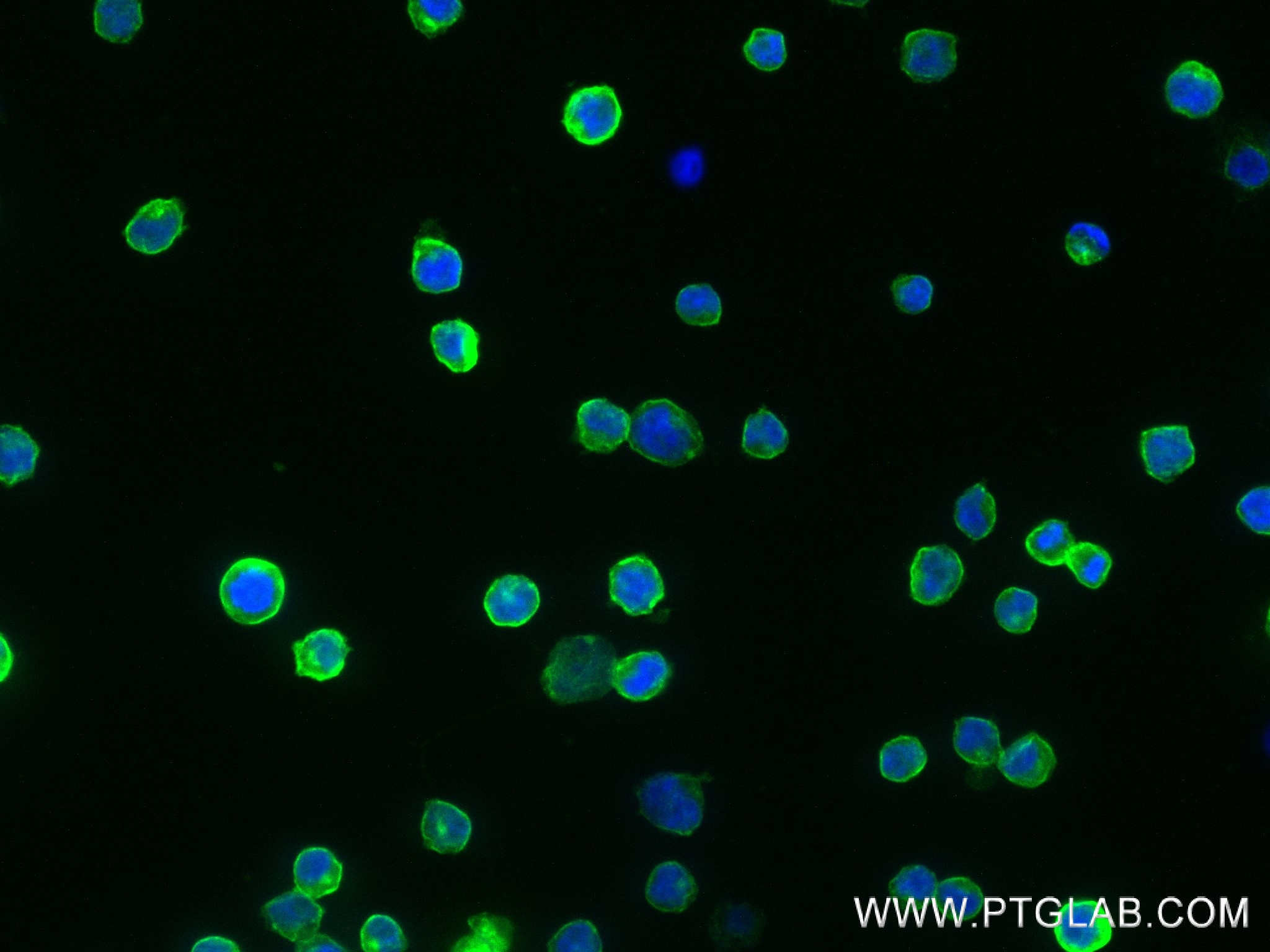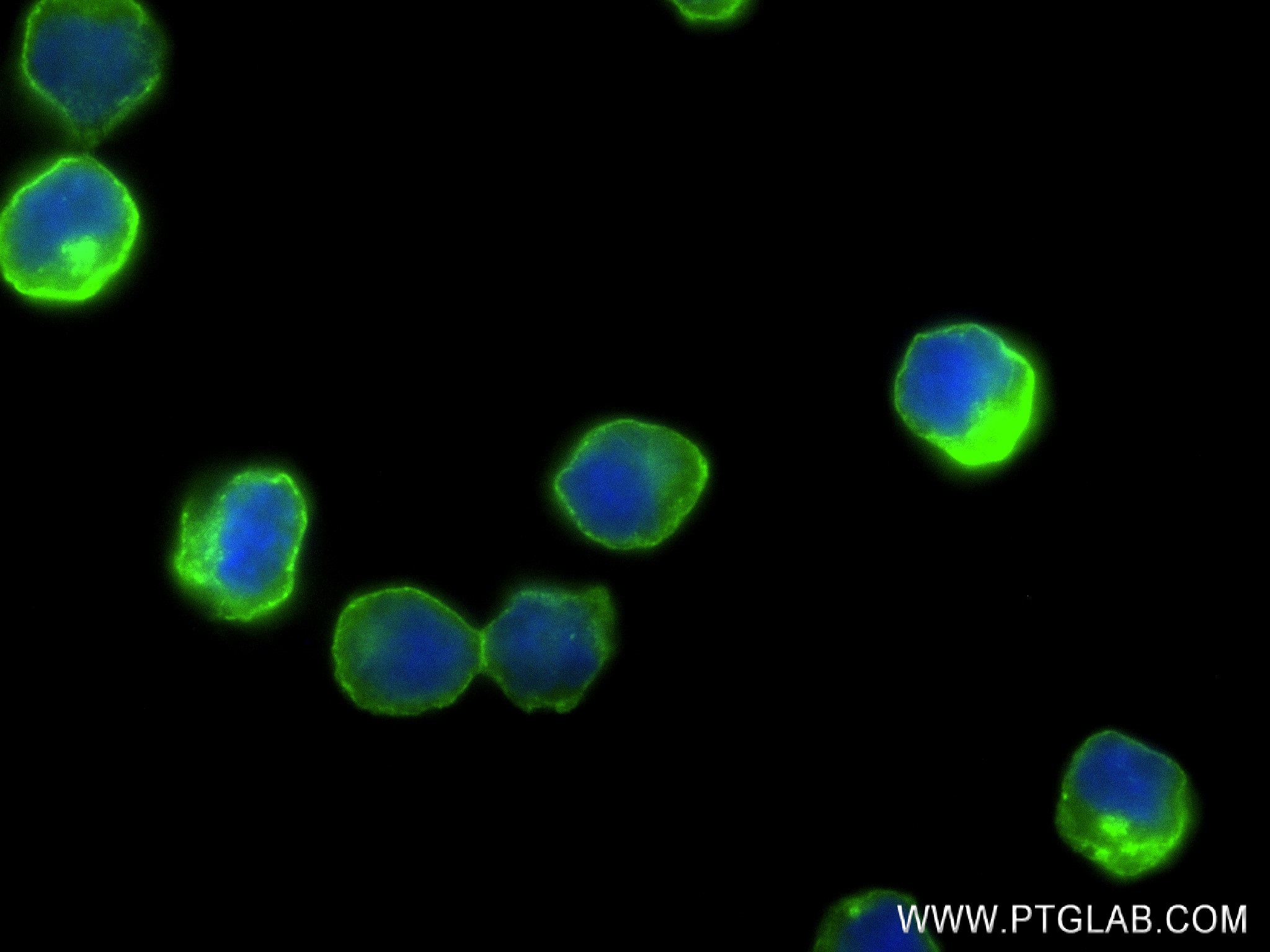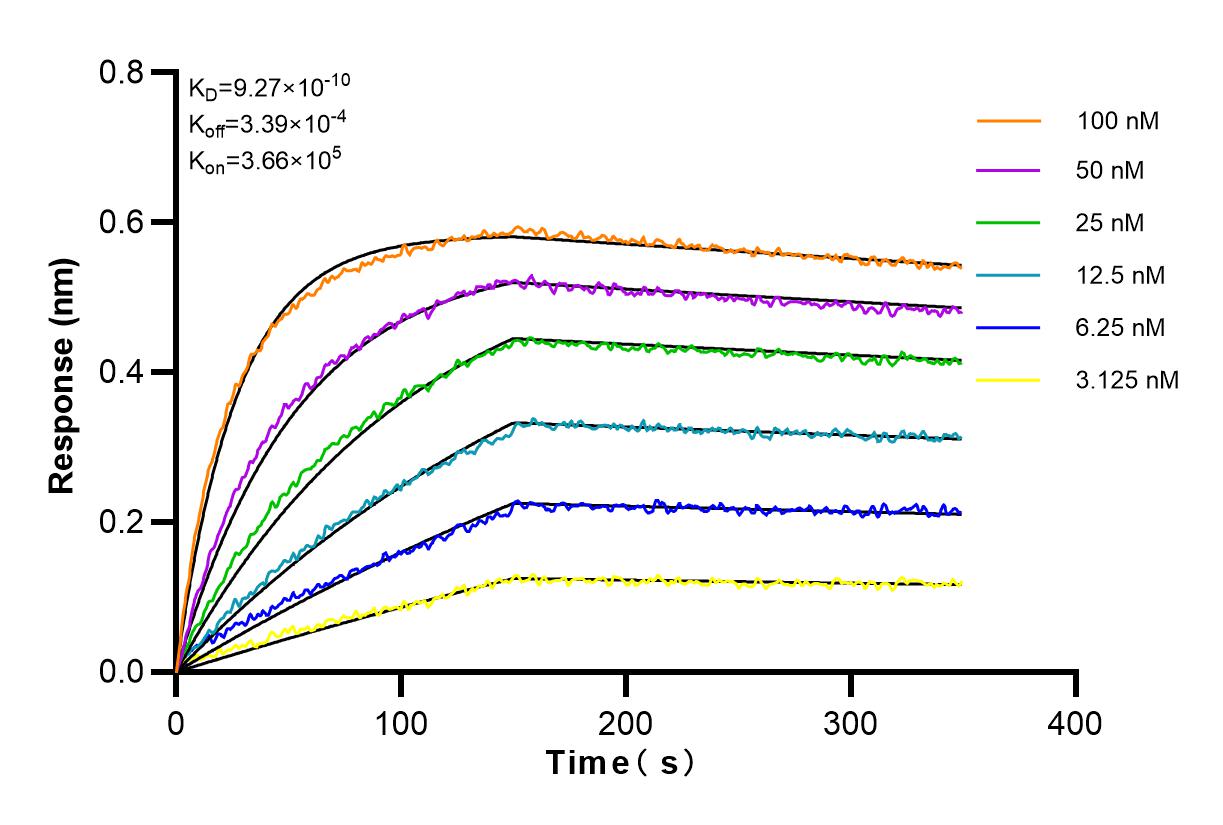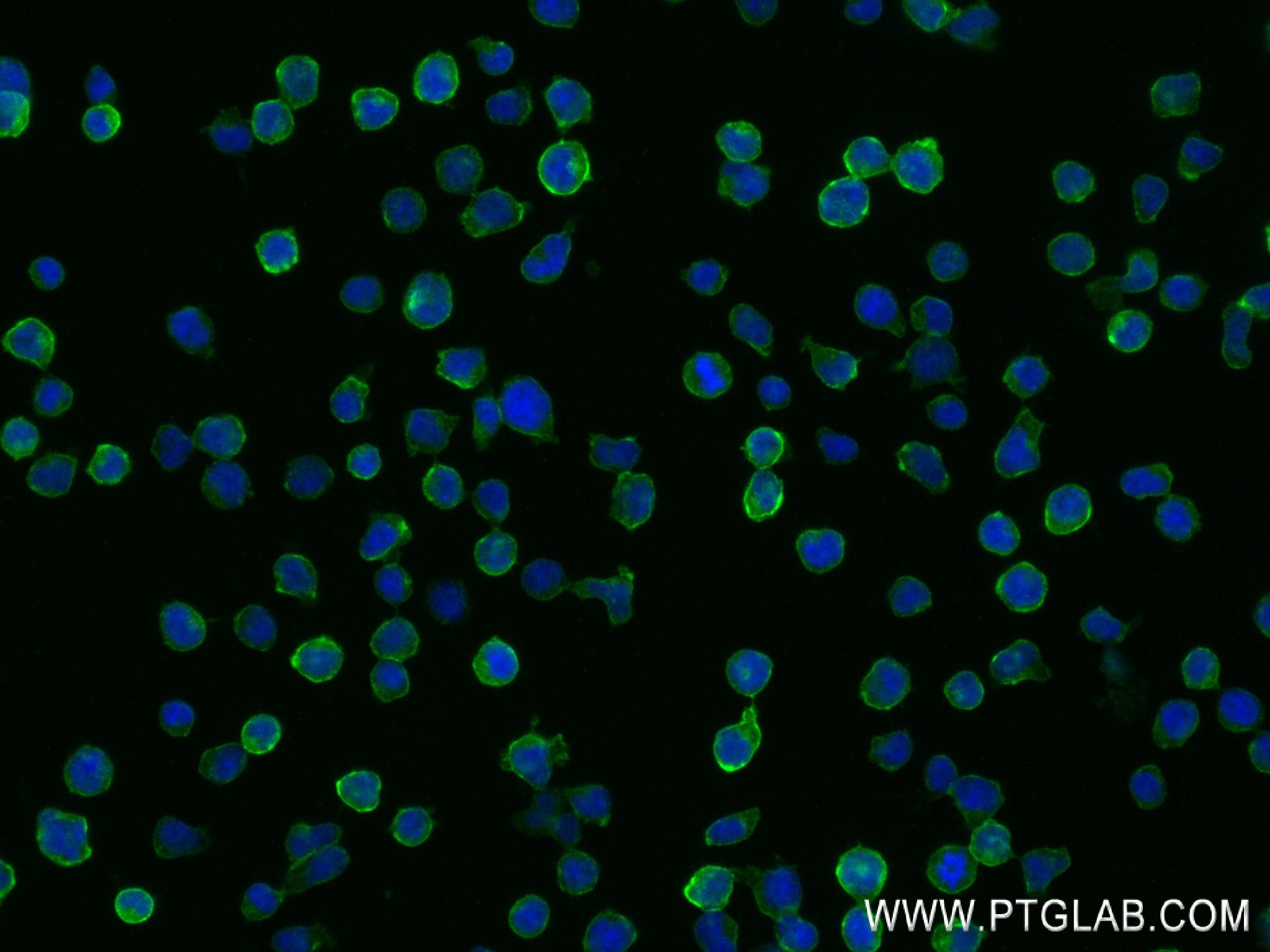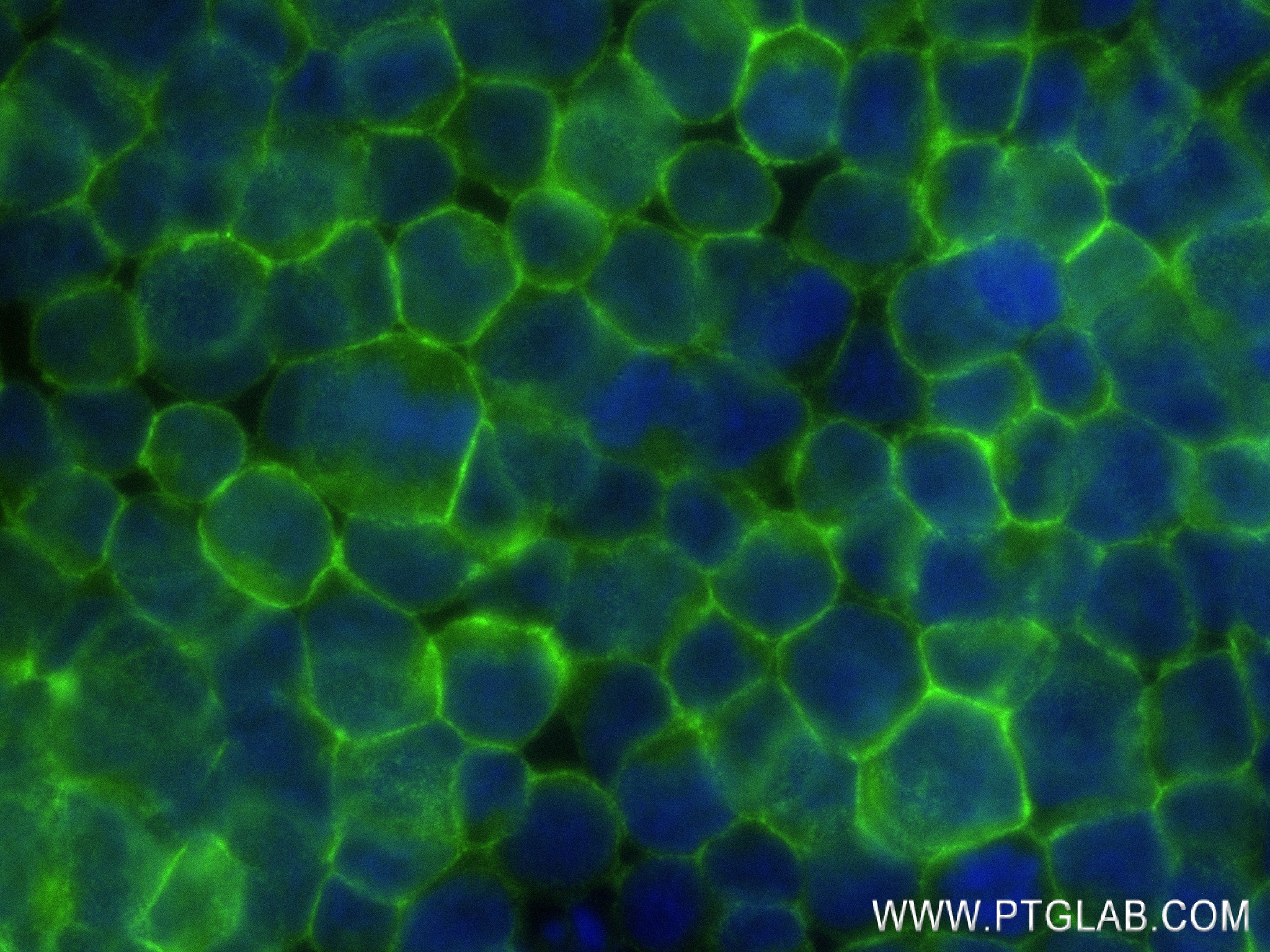验证数据展示
经过测试的应用
| Positive IF/ICC detected in | Raji cells, Jurkat cells |
推荐稀释比
| 应用 | 推荐稀释比 |
|---|---|
| Immunofluorescence (IF)/ICC | IF/ICC : 1:125-1:500 |
| It is recommended that this reagent should be titrated in each testing system to obtain optimal results. | |
| Sample-dependent, Check data in validation data gallery. | |
产品信息
83400-5-RR targets Fas/CD95 in IF/ICC, ELISA applications and shows reactivity with human samples.
| 经测试应用 | IF/ICC, ELISA Application Description |
| 经测试反应性 | human |
| 免疫原 |
Fusion Protein 种属同源性预测 |
| 宿主/亚型 | Rabbit / IgG |
| 抗体类别 | Recombinant |
| 产品类型 | Antibody |
| 全称 | Fas (TNF receptor superfamily, member 6) |
| 别名 | FAS, APT1, Apoptosis-mediating surface antigen FAS, Apo-1 antigen, APO-1 |
| 计算分子量 | 38 kDa |
| GenBank蛋白编号 | NM_000043.6 |
| 基因名称 | Fas/CD95 |
| Gene ID (NCBI) | 355 |
| RRID | AB_3671051 |
| 偶联类型 | Unconjugated |
| 形式 | Liquid |
| 纯化方式 | Protein A purfication |
| UNIPROT ID | P25445-1 |
| 储存缓冲液 | PBS with 0.02% sodium azide and 50% glycerol, pH 7.3. |
| 储存条件 | Store at -20°C. Stable for one year after shipment. Aliquoting is unnecessary for -20oC storage. |
背景介绍
Fas (CD95/APO-1) is a transmembrane glycoprotein belonging to the tumor necrosis factor (TNF) receptor superfamily. It can mediate apoptosis by ligation with an agonistic anti-Fas antibody or Fas ligand. Stimulation of Fas results in the aggregation of its intracellular death domains, leading to the formation of the death-inducing signaling complex (DISC). FAS-mediated apoptosis may have a role in the induction of peripheral tolerance, in the antigen-stimulated suicide of mature T-cells, or both.
实验方案
| Product Specific Protocols | |
|---|---|
| IF protocol for Fas/CD95 antibody 83400-5-RR | Download protocol |
| Standard Protocols | |
|---|---|
| Click here to view our Standard Protocols |

